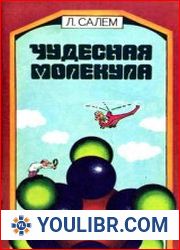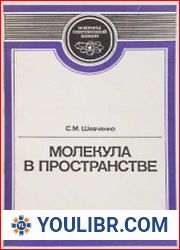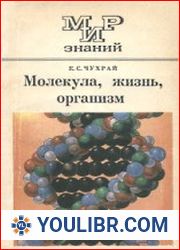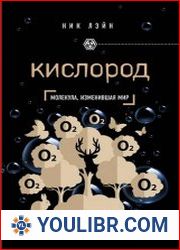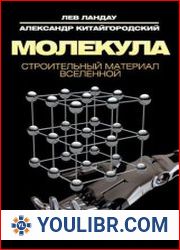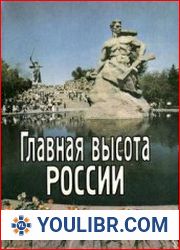
BOOKS - POPULAR SCIENCE - Самая главная молекула

Самая главная молекула
Author: Франк-Каменецкий М.Д.
Year: 1983
Format: DJVU
File size: 2,3 MB
Language: RU

Year: 1983
Format: DJVU
File size: 2,3 MB
Language: RU

The author describes the structure of the DNA molecule, its properties, and the role of the DNA molecule in the life of all living things on Earth. The DNA molecule is the main molecule of life on Earth, and it is the key to understanding the secrets of life and the universe. It is the blueprint of life, the code that contains all the information necessary for the development and functioning of all living beings. The DNA molecule is a double helix, consisting of two spiral chains of nucleotides that are twisted together. Each nucleotide consists of three components: sugar, phosphate, and nitrogenous base. The sugar is deoxyribose, which is a simple sugar found in all living organisms. The phosphate group is a compound containing phosphorus, oxygen, and sulfur. The nitrogenous bases are adenine, guanine, cytosine, and thymine. These four components are linked together by hydrogen bonds, forming a double helix structure. The DNA molecule plays a crucial role in the development and functioning of all living beings. It contains the genetic information necessary for the growth, reproduction, and functioning of all living organisms. The DNA molecule is responsible for the transmission of genetic information from one generation to the next, and it is the basis for the evolution of all living beings. The study of the DNA molecule has led to many important discoveries in biology, medicine, and other fields. The book also discusses the history of the discovery of the DNA molecule, the contributions of scientists who have studied it, and the impact of their research on our understanding of life and the universe.
Автор описывает структуру молекулы ДНК, ее свойства и роль молекулы ДНК в жизни всех живых существ на Земле. Молекула ДНК - главная молекула жизни на Земле, и она является ключом к пониманию тайн жизни и Вселенной. Это план жизни, код, который содержит всю информацию, необходимую для развития и функционирования всех живых существ. Молекула ДНК представляет собой двойную спираль, состоящую из двух спиральных цепочек нуклеотидов, которые скручены вместе. Каждый нуклеотид состоит из трёх компонентов: сахара, фосфата и азотистого основания. Сахар представляет собой дезоксирибозу, которая является простым сахаром, содержащимся во всех живых организмах. Фосфатная группа представляет собой соединение, содержащее фосфор, кислород и серу. Азотистыми основаниями являются аденин, гуанин, цитозин и тимин. Эти четыре компонента связаны между собой водородными связями, образуя двойную спиральную структуру. Молекула ДНК играет решающую роль в развитии и функционировании всех живых существ. Он содержит генетическую информацию, необходимую для роста, размножения и функционирования всех живых организмов. Молекула ДНК отвечает за передачу генетической информации от одного поколения к другому, и она является основой эволюции всех живых существ. Изучение молекулы ДНК привело ко многим важным открытиям в биологии, медицине и других областях. В книге также обсуждается история открытия молекулы ДНК, вклад ученых, которые ее изучали, и влияние их исследований на наше понимание жизни и Вселенной.
L'auteur décrit la structure de la molécule d'ADN, ses propriétés et le rôle de la molécule d'ADN dans la vie de tous les êtres vivants sur Terre. La molécule d'ADN est la principale molécule de la vie sur Terre, et elle est la clé pour comprendre les mystères de la vie et de l'univers. C'est un plan de vie, un code qui contient toutes les informations nécessaires au développement et au fonctionnement de tous les êtres vivants. La molécule d'ADN est une double hélice constituée de deux chaînes hélicoïdales de nucléotides qui sont torsadées ensemble. Chaque nucléotide se compose de trois composants : le sucre, le phosphate et la base azotée. sucre est un désoxyribose qui est un sucre simple contenu dans tous les organismes vivants. groupement phosphate est un composé contenant du phosphore, de l'oxygène et du soufre. s bases azotées sont l'adénine, la guanine, la cytosine et la thymine. Ces quatre composants sont liés entre eux par des liaisons hydrogène, formant une double structure hélicoïdale. La molécule d'ADN joue un rôle crucial dans le développement et le fonctionnement de tous les êtres vivants. Il contient les informations génétiques nécessaires à la croissance, à la reproduction et au fonctionnement de tous les organismes vivants. La molécule d'ADN est responsable de la transmission de l'information génétique d'une génération à l'autre, et elle est la base de l'évolution de tous les êtres vivants. L'étude de la molécule d'ADN a conduit à de nombreuses découvertes importantes en biologie, en médecine et dans d'autres domaines. livre traite également de l'histoire de la découverte de la molécule d'ADN, de la contribution des scientifiques qui l'ont étudiée et de l'impact de leurs recherches sur notre compréhension de la vie et de l'univers.
La autora describe la estructura de la molécula de ADN, sus propiedades y el papel de la molécula de ADN en la vida de todos los seres vivos de la Tierra. La molécula de ADN es la principal molécula de vida en la Tierra, y es clave para entender los misterios de la vida y el universo. Es un plan de vida, un código que contiene toda la información necesaria para el desarrollo y funcionamiento de todos los seres vivos. La molécula de ADN es una doble hélice compuesta por dos cadenas espirales de nucleótidos que están retorcidos juntos. Cada nucleótido se compone de tres componentes: azúcar, fosfato y base nitrogenada. azúcar es una desoxirribosa, que es un azúcar simple que se encuentra en todos los organismos vivos. grupo fosfato es un compuesto que contiene fósforo, oxígeno y azufre. bases nitrogenadas son adenina, guanina, citosina y timina. Estos cuatro componentes están unidos entre sí por enlaces de hidrógeno, formando una estructura espiral doble. La molécula de ADN juega un papel crucial en el desarrollo y funcionamiento de todos los seres vivos. Contiene la información genética necesaria para el crecimiento, la reproducción y el funcionamiento de todos los organismos vivos. La molécula de ADN es la encargada de transmitir la información genética de una generación a otra, y es la base de la evolución de todos los seres vivos. estudio de la molécula de ADN ha dado lugar a muchos descubrimientos importantes en biología, medicina y otros campos. libro también discute la historia del descubrimiento de la molécula de ADN, la contribución de los científicos que la estudiaron y el impacto de su investigación en nuestra comprensión de la vida y el universo.
O autor descreve a estrutura da molécula de DNA, suas propriedades e o papel da molécula de DNA na vida de todos os seres vivos na Terra. A molécula de DNA é a principal molécula da vida na Terra, e é a chave para compreender os mistérios da vida e do universo. É um plano de vida, um código que contém todas as informações necessárias para o desenvolvimento e funcionamento de todos os seres vivos. A molécula de DNA é uma espiral dupla, composta por duas cadeias espirais de nucleares otídeos que são torcidas juntas. Cada nuclear é composto por três componentes: açúcar, fosfato e base nitrogenada. O açúcar é uma desoxiribose que é um simples açúcar contido em todos os organismos vivos. O fosfato é um composto que contém fósforo, oxigênio e enxofre. Os fundamentos nitrogenados são adenina, guanina, citosina e timina. Estes quatro componentes estão ligados por conexões de hidrogénio, formando uma estrutura espiral dupla. A molécula de DNA é crucial para o desenvolvimento e funcionamento de todos os seres vivos. Ele contém informações genéticas necessárias para o crescimento, reprodução e funcionamento de todos os organismos vivos. A molécula de DNA é responsável pela transmissão de informação genética de uma geração para outra, e é a base da evolução de todos os seres vivos. O estudo da molécula de DNA levou a muitas descobertas importantes em biologia, medicina e outras áreas. O livro também discute a história da descoberta da molécula de DNA, as contribuições dos cientistas que a estudaram e a influência de seus estudos na nossa compreensão da vida e do universo.
L'autore descrive la struttura della molecola del DNA, le sue proprietà e il ruolo della molecola del DNA nella vita di tutti gli esseri viventi sulla Terra. La molecola del DNA è la molecola principale della vita sulla Terra, ed è la chiave per comprendere i segreti della vita e dell'universo. È un piano di vita, un codice che contiene tutte le informazioni necessarie per lo sviluppo e il funzionamento di tutti gli esseri viventi. La molecola del DNA è una doppia spirale costituita da due catene a spirale di nucleotidi che si stringono insieme. Ogni nucleotide è costituito da tre componenti: zucchero, fosfato e base azotata. Lo zucchero è una disossiribosa che è un semplice zucchero contenuto in tutti gli organismi viventi. Il gruppo fosfato è un composto contenente fosforo, ossigeno e zolfo. basi azotate sono adenina, guagnina, citosina e timina. Questi quattro componenti sono collegati da legami a idrogeno, formando una doppia struttura a spirale. La molecola del DNA è fondamentale per lo sviluppo e il funzionamento di tutti gli esseri viventi. Contiene le informazioni genetiche necessarie per la crescita, la riproduzione e il funzionamento di tutti gli organismi viventi. La molecola del DNA è responsabile della trasmissione delle informazioni genetiche da una generazione all'altra, ed è la base dell'evoluzione di tutti gli esseri viventi. Lo studio della molecola del DNA ha portato a molte importanti scoperte in biologia, medicina e altre aree. Il libro parla anche della storia della scoperta della molecola del DNA, del contributo degli scienziati che l'hanno studiata e dell'impatto della loro ricerca sulla nostra comprensione della vita e dell'universo.
Der Autor beschreibt die Struktur des DNA-Moleküls, seine Eigenschaften und die Rolle des DNA-Moleküls im ben aller bewesen auf der Erde. Das DNA-Molekül ist das Hauptmolekül des bens auf der Erde und es ist der Schlüssel zum Verständnis der Geheimnisse des bens und des Universums. Es ist ein bensplan, ein Code, der alle Informationen enthält, die für die Entwicklung und das Funktionieren aller bewesen notwendig sind. Das DNA-Molekül ist eine Doppelhelix, die aus zwei spiralförmigen Nukleotidketten besteht, die miteinander verdreht sind. Jedes Nukleotid besteht aus drei Komponenten: Zucker, Phosphat und Stickstoffbase. Zucker ist Desoxyribose, ein einfacher Zucker, der in allen lebenden Organismen vorkommt. Eine Phosphatgruppe ist eine Verbindung, die Phosphor, Sauerstoff und Schwefel enthält. Stickstoffbasen sind Adenin, Guanin, Cytosin und Thymin. Diese vier Komponenten sind durch Wasserstoffbrücken miteinander verbunden und bilden eine Doppelhelixstruktur. Das DNA-Molekül spielt eine entscheidende Rolle bei der Entwicklung und Funktion aller bewesen. Es enthält genetische Informationen, die für das Wachstum, die Fortpflanzung und das Funktionieren aller lebenden Organismen erforderlich sind. Das DNA-Molekül ist dafür verantwortlich, genetische Informationen von einer Generation zur nächsten zu übertragen, und es ist die Grundlage für die Evolution aller bewesen. Die Untersuchung des DNA-Moleküls hat zu vielen wichtigen Entdeckungen in Biologie, Medizin und anderen Bereichen geführt. Das Buch diskutiert auch die Geschichte der Entdeckung des DNA-Moleküls, die Beiträge der Wissenschaftler, die es untersucht haben, und die Auswirkungen ihrer Forschung auf unser Verständnis von ben und Universum.
''
Yazar, DNA molekülünün yapısını, özelliklerini ve DNA molekülünün dünyadaki tüm canlıların yaşamındaki rolünü açıklar. DNA molekülü, Dünya üzerindeki yaşamın ana molekülüdür ve yaşamın ve evrenin gizemlerini anlamanın anahtarıdır. Bu bir yaşam planıdır, tüm canlıların gelişimi ve işleyişi için gerekli tüm bilgileri içeren bir koddur. Bir DNA molekülü, birlikte bükülmüş iki sarmal nükleotit zincirinden oluşan bir çift sarmaldır. Her nükleotit üç bileşenden oluşur: şeker, fosfat ve azotlu baz. Şeker, tüm canlı organizmalarda bulunan basit bir şeker olan deoksiribozdur. Fosfat grubu fosfor, oksijen ve kükürt içeren bir bileşiktir. Azotlu bazlar adenin, guanin, sitozin ve timin'dir. Bu dört bileşen, hidrojen bağları ile birbirine bağlanır ve çift sarmal bir yapı oluşturur. DNA molekülü, tüm canlıların gelişiminde ve işleyişinde çok önemli bir rol oynar. Tüm canlı organizmaların büyümesi, üremesi ve işleyişi için gerekli genetik bilgiyi içerir. DNA molekülü, genetik bilginin bir nesilden diğerine aktarılmasından sorumludur ve tüm canlıların evriminin temelidir. DNA molekülünün incelenmesi biyoloji, tıp ve diğer alanlarda birçok önemli keşfe yol açmıştır. Kitap ayrıca DNA molekülünün keşfinin tarihini, onu inceleyen bilim adamlarının katkılarını ve araştırmalarının yaşam ve evren anlayışımız üzerindeki etkisini tartışıyor.
يصف المؤلف بنية جزيء الحمض النووي وخصائصه ودور جزيء الحمض النووي في حياة جميع الكائنات الحية على الأرض. جزيء الحمض النووي هو الجزيء الرئيسي للحياة على الأرض، وهو يحمل مفتاح فهم ألغاز الحياة والكون. هذه خطة حياة، مدونة تحتوي على جميع المعلومات اللازمة لتنمية وعمل جميع الكائنات الحية. جزيء الحمض النووي هو حلزون مزدوج يتكون من سلسلتين حلزونيتين من النيوكليوتيدات الملتوية معًا. يتكون كل نوكليوتيد من ثلاثة مكونات: السكر والفوسفات والقاعدة النيتروجينية. السكر هو منقوص الأكسجين، وهو سكر بسيط موجود في جميع الكائنات الحية. مجموعة الفوسفات هي مركب يحتوي على الفوسفور والأكسجين والكبريت. القواعد النيتروجينية هي الأدينين والغوانين والسيتوزين والثايمين. هذه المكونات الأربعة مترابطة بواسطة الروابط الهيدروجينية، مما يشكل بنية حلزونية مزدوجة. يلعب جزيء الحمض النووي دورًا مهمًا في تطوير وعمل جميع الكائنات الحية. وهو يحتوي على المعلومات الجينية اللازمة لنمو وتكاثر وعمل جميع الكائنات الحية. جزيء الحمض النووي مسؤول عن نقل المعلومات الجينية من جيل إلى آخر، وهو أساس تطور جميع الكائنات الحية. أدت دراسة جزيء الحمض النووي إلى العديد من الاكتشافات المهمة في علم الأحياء والطب ومجالات أخرى. يناقش الكتاب أيضًا تاريخ اكتشاف جزيء الحمض النووي، ومساهمات العلماء الذين درسوه، وتأثير أبحاثهم على فهمنا للحياة والكون.







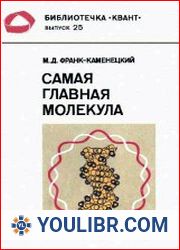
 49
49  1 TON
1 TON

